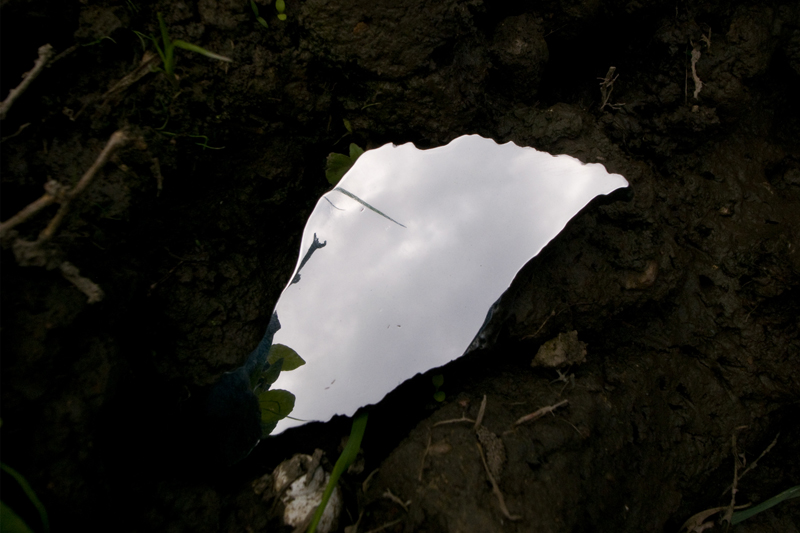Squid Currency
2020 - Sculpture (Sculpture)
13 elements, each approximately: 8 x 4 x 1 cm
Natsuko Uchino
Squid Currency is a series of 13 non-calibrated double-sided tin coins made using a casting technique dating back to Neolithic times where cuttlebones (squid bones) were carved by hand and then used as a mold. Natsuko Uchino draws on research into tin mining across the world, which takes place largely in China and Bangladesh as well as in Potosi, Bolivia where silver has been depleted due to the production of coins and other ornate riches during the 16th century Spanish Empire. Tin has a low melting point and is easily up-cycled from vessels such as measuring cups and kitchen utensils found at yard sales. Money is a surrogate for value and it serves as a unit to measure exchange within a community that accepts transactions by sharing it. The common usage of money does not always mean that everything in the world is commensurate, nor does currency need to be based on accumulation, competition or capitalism. A bank is only formed when a community creates it and economy is the dynamics of relations in a community that shares resources, manufacturing, services and bonds. The blatant inequality pervasive in our present economy is a reflection of the history of domination, violence and usurpation, but the essence of exchange and the mesh of social fabric give way to a number of other intricate structures and infrastructures. (show many other intricate structures). There are alternative and complementary currencies that attempt to manifest such diversity that may or may not be pegged to central monies; the squid currency is sold as an artwork traded at a price contingent to its production context. Its circulation value is indeterminate and should be prescribed by its usage.
Natsuko Uchino is an artist whose practice is defined by its interaction with agriculture and craft; she relocated to a rural area of France in order to have an open air studio where she could produce ceramics and work with natural elements such as mushrooms and fermentation techniques and where she collaborates with farms. Linking these disciplines to contemporary practice, she reevaluates production techniques through collaboration, conviviality and exchange, reflecting on the circulation of knowledge and goods.
Colors:
Related works sharing similar palette
» see more

© » KADIST
Adriana Martínez
2015Her work Al final del arcoiris (At the end of the rainbow, 2015) is a bundle of bills from Chile, Venezuela, Brazil, Colombia, Nicaragua, and Costa Rica, arranged by color to form a tight spiraling rainbow held close with a rubber band...

© » KADIST
Andrew Norman Wilson
2020On the first day of the Covid-19 lockdown in New York, Andrew Norman Wilson was evicted from his sublet and decided to board a $30 flight to Los Angeles that evening...

© » KADIST
Pratchaya Phinthong
Phinthong made four photographs depicting fragments of meteorites of which the faces have been polished to reflect the sky...
Related works found in the same semantic group
» see more

© » KADIST
Yoshinori Niwa
2011Yoshinori Niwa’s investigation into the monetary system and material goods is witnessed across a range of his works...

© » KADIST
Pratchaya Phinthong
2009Phinthong provided 5,000 Euros to exchange for Zimbabwean dollars, the most devalued and worthless currency in the world...

© » KADIST
Abraham Oghobase
2018This series of photographs is inspired by the artist’s travels to Jos, Nigeria...

© » KADIST
Rodrigo Torres
2016In his Conceito abstrato series, however, Rodrigo Torres turns to the abstract, using the shapes, numbers, lines, and subtle colors of international currencies to create non-representational forms with lavish geometries and baroque curving forms....

